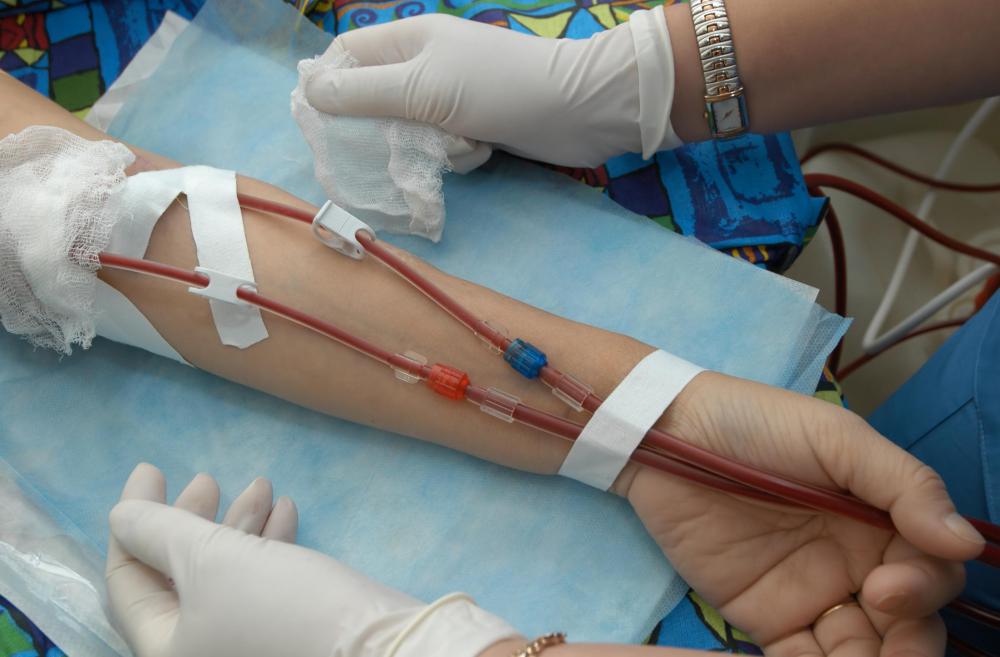At WiseGEEK, we're committed to delivering accurate, trustworthy information. Our expert-authored content is rigorously fact-checked and sourced from credible authorities. Discover how we uphold the highest standards in providing you with reliable knowledge.
What are the Most Common C-Section Risks?
A caesarean section delivery may be needed if the baby is not tolerating labor, is breech, or is too big to be delivered vaginally. Although it may be medically indicated, there are c-section risks. The most common c-section risks include bleeding, infection, and adhesions.
Bleeding during c-section surgery is to be expected. Both the lower abdominal muscles and the uterus are cut. Although bleeding is normal, one complication that can develop is excessive bleeding. This may occur if the woman has a disorder that interferes with clotting, or if an organ is accidentally nicked during the procedure. Blood loss can occasionally become so severe a blood transfusion is needed.

Additional c-section risks include infection. Infection can develop in the lining of the uterus or where the incision was made. A bladder infection may also develop after a c-section procedure. Antibiotics will be needed, either orally or intravenously, after the c-section.
Some c-sections require general anesthesia, although most are performed using an epidural. One potential c-section complication is associated with the epidural. Some women will experience a bad headache after having the epidural. This typically happens if the epidural needle hits the dura, causing the spinal fluid to leak out. This usually heals in a few days and the headache dissipates.

The uterus is cut during a c-section, so scar tissue forms. Adhesions develop when the scar tissue connects two organs. Although c-section adhesions may not cause any problems in some people, they can cause pain and may interfere with pregnancy in the future.
Other c-section risks involve complications with future pregnancies. Placenta previa occurs when the placenta attaches lower than normal and covers the cervix. When labor starts and the cervix dilates, the placenta can detach in these cases, which is an emergency for both mom and baby. Women who have had a prior c-section are at a higher risk of developing the condition.

There may also be some c-section risks to the baby. There is some evidence that babies who are delivered via a c-section have a slightly increased risk of breathing problems. During a vaginal delivery, the baby’s lungs get compressed as the baby passing through the birth canal. This helps to squeeze the amniotic fluid out of the baby’s lungs. Babies delivered by c-section may need a little extra stimulation and suctioning of the lungs.

It is important to remember most women who have a c-section recover well. A c-section may be the best and safest option in some situations. Women should be made aware of all the potential c-section risks and complications in order to make an informed decision.
AS FEATURED ON:
AS FEATURED ON:














Discuss this Article
Post your comments